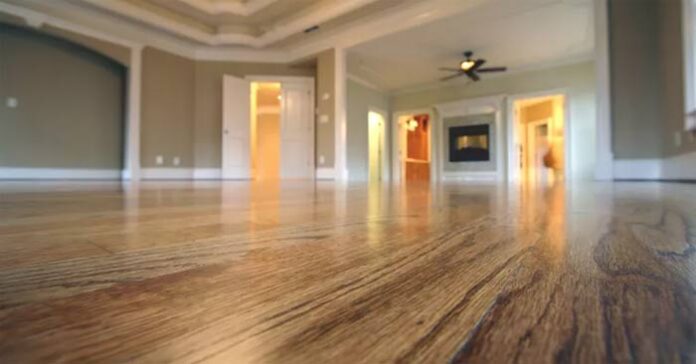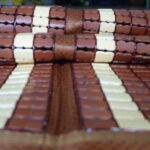When selecting hardwood flooring for your construction or home renovation project, take the time to do your research before making a decision. Mistakes with hardwood flooring are not easily rectified, so you want to ensure that the hardwood flooring you install is perfect for your home.

The following are common mistakes to avoid when choosing hardwood flooring, shared by experts, to help you make an informed decision.
Common Mistakes to Avoid When Choosing Hardwood Flooring
Choosing the Wrong Type of Wood
If you don’t regularly work with wood, you may not be aware that different species have distinct characteristics. Some types of wood are considered hardwood, while others are categorized as softwood. Selecting the wrong type of wood for your floor can have significant consequences.
Ron Shimek, president of Mr. Handyman, identifies this as one of the primary mistakes people make when choosing hardwood flooring. He recommends opting for durable wood species like oak, maple, or walnut for high-traffic areas, as softer woods like pine or cherry may not withstand wear and tear and are more prone to scratches.
In addition to durability, even the color of the hardwood flooring you choose can significantly impact its performance. Todd Weyhmiller, a flooring expert and product management director at Bona, suggests considering your lifestyle before selecting a wood type, especially when it comes to the color of the hardwood flooring.
“Lighter-colored woods like maple are more prone to showing dirt, scratches, stains, and dents, which may make them less suitable for busy homes with large families, pets, or frequent gatherings,” Weyhmiller says. “Medium to darker-colored woods tend to show less dirt but camouflage damage and dirt better, which can make the floor look cleaner for longer without showing significant wear.”

Following Trends Over Durability
Hardwood flooring trends come and go. Chances are, your trendy hardwood flooring will outlast the fad that inspired your choice. So, if you prioritize fashion over durability, you may end up paying a hefty price when the trend fades.
Selecting the Wrong Finish
Choosing the wrong finish can make your hardwood susceptible to unsightly wear and tear soon after installation.
Similar to selecting the wood type, Shimek advises considering traffic patterns and the room’s purpose when choosing a finish. Then, opt for a durable finish like polyurethane for high-traffic areas.

Not Buying In-Person
While online shopping is convenient, some items are better chosen in person, and hardwood flooring is one of them. Instead of relying on 2D images or low-quality 3D renderings, visit a flooring showroom.
Buying hardwood flooring in-person allows you to touch and feel the product, view it under different lighting conditions, and get a true sense of its appearance and texture.
Neglecting Technical Considerations
Many people assume that solid hardwood is superior in quality to engineered hardwood, but that’s not always the case. Weyhmiller notes that engineered hardwood is sometimes preferred over solid hardwood due to its higher dimensional stability, especially valuable in varying climatic conditions.
“(Engineered hardwood) doesn’t expand or contract based on changes in humidity or temperature like solid hardwood does,” he says. “If you live in an area with very dry winters and humid summers, engineered hardwood may be the better choice.”
Why Do Foreigners Rarely Use Phone Cases? It Turns Out There’s a Surprising Reason.
The use of phone cases is an intriguing cultural contrast between foreigners and Vietnamese locals. While it is uncommon for foreigners to adorn their phones with cases, it is quite the opposite for the Vietnamese, for whom a phone case is a ubiquitous accessory. This prompts the question: why the disparity?







































